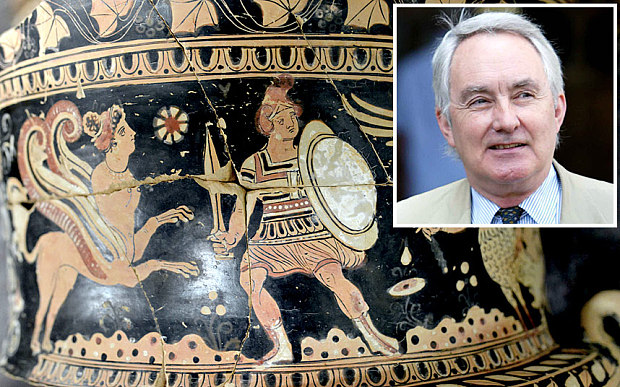
Italian Authorities Recover Looted Etruscan Antiquities from Tomb Raiders

### Italian Authorities Recover Looted Etruscan Artifacts Worth €8 Million
In a groundbreaking operation aimed at safeguarding cultural heritage, Italian authorities have successfully recovered a trove of Etruscan artifacts dating back to the third century BCE. These artifacts, looted from an ancient necropolis in the Umbria region, were set to be sold on the lucrative black market for illicit antiquities. The recovered treasures, including stone urns, sarcophagi, and a variety of funerary items, are estimated to be worth a staggering €8 million (~$8.4 million), as per Italy’s Ministry of Culture announcement on November 19, 2024.
### A Journey Through Time: The Etruscan Legacy
The Etruscan civilization, which thrived in central Italy between the eighth and third centuries BCE, predates the Roman Empire and has left an indelible mark on art and architecture. Known for its exquisite craftsmanship, the Etruscans were adept at producing black earthenware pottery called *bucchero* and intricately designed bronze and copper objects. Etruscan tombs, art, and inscriptions provide invaluable insights into the culture, though much about this ancient civilization remains enigmatic due to the limited survival of written texts.
Notably, the artifacts recovered in this operation shed light on the artistic and cultural richness of Etruscan society. They include elaborately decorated stone cinerary urns, bronze mirrors, and perfume vessels—objects that reveal both the daily and spiritual lives of the Etruscans.
### The Investigation: A Blend of Forensics and History
The recovery operation began in April, following a tip-off involving photographs of looted Etruscan urns circulating on the black market. These urns, adorned with carvings depicting scenes of hunting, battles, and myths such as that of Achilles and Troilus, were immediately identified as culturally significant by Italian authorities.
With the assistance of a professor from the University of Rome Tor Vergata, investigators were able to trace the artifacts back to their original site: a necropolis near Città della Pieve, approximately 100 miles north of Rome. The site, an archaeological goldmine, had been illegally excavated by local tomb raiders.
The investigation quickly zeroed in on a local business owner with property adjacent to the necropolis. The amateurish efforts of the looters—who left behind telltale signs of unprofessional excavation—provided further evidence. In a dramatic twist, one of the suspects unwittingly exposed his involvement by posting a photograph of himself with one of the stolen artifacts on Facebook, enabling authorities to build a solid case.
### Arrests and Cultural Reclamation
Two individuals are now facing charges related to artifact theft and illicit trade. Perugia Chief Prosecutor Raffaele Cantone described the suspects as “clumsy” and “amateurish,” noting their lack of sophisticated methods compared to professional looters. The arrests represent not only a success for law enforcement but also an affirmation of Italy’s commitment to preserving its cultural heritage.
Among the recovered treasures were eight cinerary urns made of white travertine and adorned with intricate carvings, two sarcophagi (one containing a complete skeleton), and numerous funerary items. These include four bronze mirrors, a bone comb, and buckets and jugs often used by Etruscan women during banquets. One particularly fascinating find was a vessel that still contained traces of ancient perfume—providing a tangible connection to Etruscan customs.
### The Broader Picture: Challenges in Combatting Looting
The black-market trade of stolen antiquities is a global issue, with many artifacts ending up in private collections or international markets. For Italy, rich in ancient history, combatting the looting of archaeological sites has been an ongoing challenge. However, through the efforts of specialized units like the Carabinieri for the Protection of Cultural Heritage and international collaborations, many stolen artifacts have been repatriated in recent years.
This investigation highlights the critical role of academic expertise, digital forensics, and public vigilance in protecting cultural heritage. Cases like this also underscore the importance of global cooperation among nations, museums, and organizations to stem the tide of artifact smuggling.
### The Cultural Significance of the Recovery
The recovery of these artifacts is not merely a financial gain for Italy but, more importantly, a reclamation of historical identity. Every urn, sarcophagus, and object tells a story about the Etruscan civilization and its profound influence on later cultures, including the Romans. With the artifacts now safe, researchers will have the opportunity to study them in detail, uncovering more about the enigmatic Etruscans.
While significant strides have been made, this case serves as a reminder of the tireless efforts required to protect the treasures of antiquity. For every artifact recovered, countless others remain lost to unscrupulous looters and